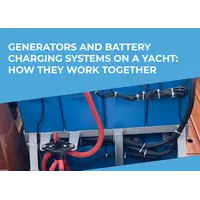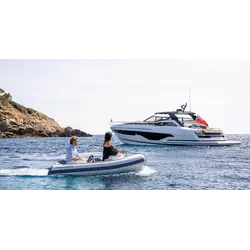With modern technological advances in the world of yachting it is very easy to forget one simple thing: when you are at the sea, there is nothing guarding you from merciless depths of the ocean other than some pieces of metal or fiberglass bashed together. The accidents are never expected and often even the possibility of them is dismissed by the most experienced captains of the biggest ships ever – just remember Titanic, or, more recently, the Concordia disaster.
In this article we will explore what equipment you must have on board to avoid being associated with those unfortunate captains in the future. We will talk not only about life rafts and first aid kit, but also about signaling devices, emergency lights, bilge pumps etc.
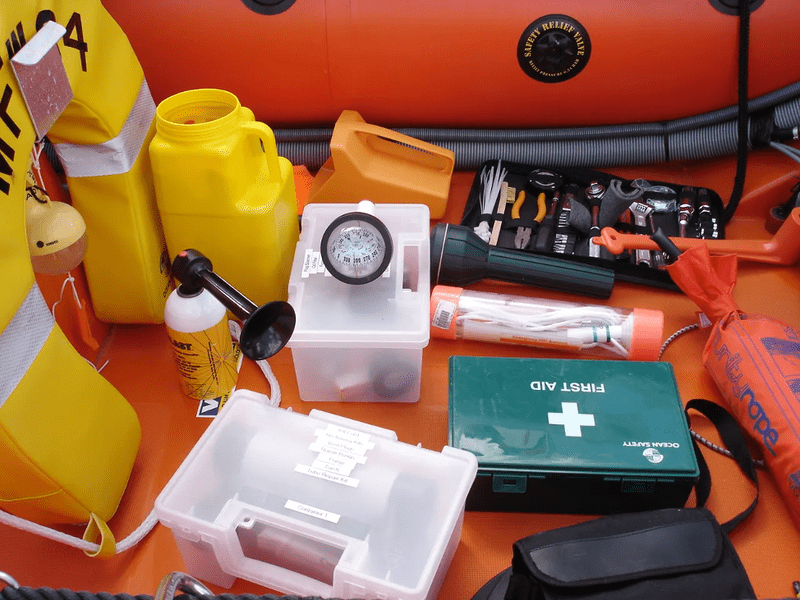
Keep in mind, if you try to save up on safety equipment or decide that knowledge of safety techniques is a waste of your time, you might end up in the most horrible situation of your life without any clue what to do to resolve it. Even the tiniest problem might grow into a cascade of unlikely events if not addressed in time.
A laceration from hitting the sharp rocks while swimming is not that scary when you can treat the wound right on board. Your engine breaking in the middle of the ocean is manageable as long as you can send the SOS message in time. Even flipping can be dealt with if you are prepared for such an event and have a reliable raft ready to go. But imagine an infected bleeding wound with nothing to treat it with, staying in one place day after day in the middle of nowhere without any help or trying to swim to the shore that is many miles away grabbing on to some random fender or locker just because you decided that the raft would take too much space on board.
Let’s make sure that situations like this will never happen in your life or lives of your vessel’s passengers.
First Aid Kit and Its Essentials
With a well-prepared first aid kit you don’t really lose much space on board even the smallest boats and you are always ready to address any injury right away. Sure, some most unfortunate injuries might require emergency care, but even in that case you can prepare the wound or fracture before further treatment by professionals once you get to the shore.
Your first aid kit must not be hidden under three layers of halyards, fenders and folding chairs in some forgotten locker. It must be accessible at all times, constantly checked and replenished, must be optimized both for amount of people on board and the remoteness of your water area. Basically, the kit on a big yacht crossing the ocean with 10 people on board must be much larger and better stocked than the one on board a 7-meter boat coursing through coastal waters.
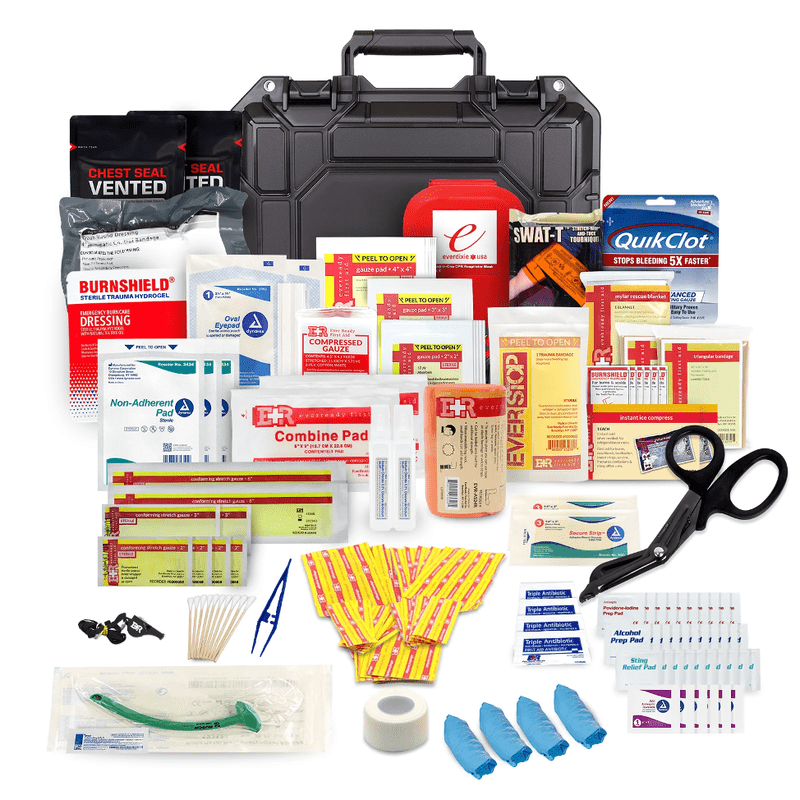
Here are some items that, in our opinion, are necessary for most trips. Some of these options might be combined into reintegration packs that are available for purchase at topRik marketplace.
- Bandages. Simple, yet so important – they better be of adhesive type with different sizes available. It is better to include both usual and waterproof options along with sterile gauze pads and sting relief wipes. Adhesive tape to control bleeding will also be a good addition.
- Tools. Tourniquets, splints, scissors, gloves, CPR face mask – all of these better be on board together with a precise digital thermometer.
- Antiseptics. Make sure to have antiseptic wipes and first aid cream to fight off all possible marine infections in unknown waters.
- Pills and treatments. You can include aspirin, motion sickness and pain relievers, antihistamines, eye wash and burn treatmens.
- Manuals. Even if you know CPR, somebody else might not. Other emergency procedures are just as important and it’s better to refresh them all in your memory from time to time.
- Contact information. It is extremely important to make a call in time in case of emergency instead of trying to remember the right number in a foreign marina. It is better to ake another copy of this list and put it in a social area for everyone to see.
There are some ready-made kits online, but you should check them thoroughly before taking one of them with you. It would be ideal to contact a medical specialist before
Boat Rescue Equipment
It is not all about bruises and scratches – sometimes the nature just wants to downright drown you or freeze you to death. To fight it back, better keep these things on board.
Life raft. The bigger your vessel, the bigger your raft must be. It become the last resort in case unthinkable happens and it would be unwise trying to save up on it. It must be inspected regularly and be properly stowed, always ready to go.
Bilge pump. Flooding can be averted when addressed in time – with this device you can fix the leakage in an efficient way instead of trying to do it under water. It needs to be in good shape at all times and you should have some spare parts for it too.
Life vests. When it comes to lives of the passengers, especially if they are not great swimmers, vests are a must on board any yacht. You better have more than actually needed in case you have unexpected guests.
Throwable flotation devices. Safety ring is sometimes much more practical than a vest as it allows to help those who are already overboard.
Help attractors. Any kind of device to make people turn their head towards you: whistle, emergency lights, flares, strobe lights, electronic signal or even an old-school signaling mirror. Make sure to have batteries in order, if needed, and know how to use a mirror so the reflections are aimed right at the target. Electrical devices and flares must be kept inside waterproof storage containers.
Thermal blankets. Speaking of freezing – with these you are less likely to face serious health problems after getting soaked during harsh weather.
Fire extinguisher. Usually, fires occur due to modern everyday problems: malfunctioning batteries and electrical circuits, fuel leakage or just carsness during cooking on board. The eguisher must be marine-grade and you must read the instruction that comes with it carefully.
- Various tools. Knifes to cut lines around a fouled propeller, snorkel mask for inspection of the hull, flashlights, oars in case the engine dies, manual bailing device to replace a malfunctioning pump, repair kits, even just a simple ladder. You never know which of these items m one day save your life.
There’s no such thing as too much rescue equipment if you are planning an ocean crossing. Pack it all and have some spares.
Radio Set and GPS
VHF radio is crucial in case of any emergency as it allows you to call for help as long as you have access to any control post. When we go out at the sea, all of us yachtsmen are in this together – today I’ll help you, tomorrow you’ll help me, so be sure to have at least one functioning radio on board and go through some drills while still docked to ensure most efficient usage of it. Always test it before unmooring and protect it from water splashes – better to get yourself a waterproof model right away.
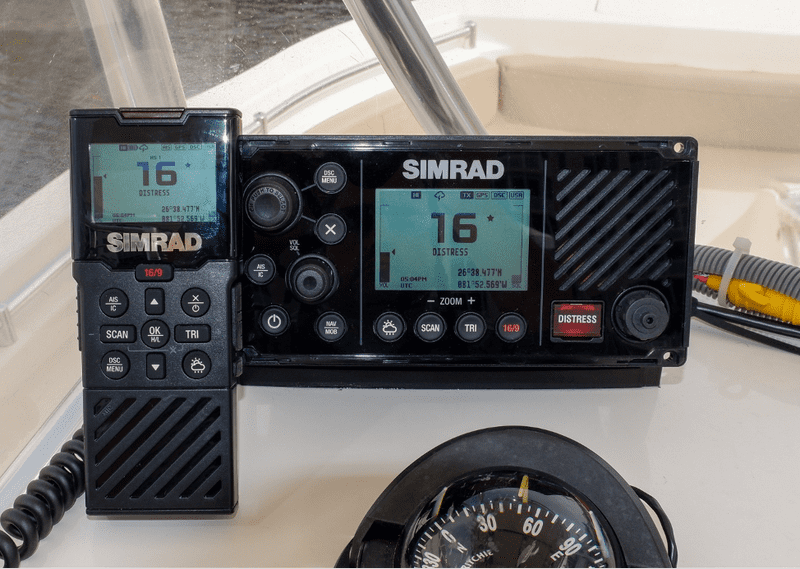
GPS will help you to understand where exactly your boat is so you could give the coordinates to the rescue team or quickly plan the route to the nearby docks. Beware of having outdated maps and charts loaded into it – such a simple mistake might endanger the lives of many. Always take some time to install all the latest software and maps, get accustomed to its interface, controls, menus and functions to avoid wasting time during the accident.
Radios that have Digital Selective Calling function with GPS receiver are a preferred option since combine best of two worlds – they allow you to send the message with your coordinates included. You also better have a registered unique Marine Mobile Service Identity number for quick identification of your vessel.
More to Consider
Remember – maritime law requires a certain necessary equipment to be present on board at all times (check your local laws or consult with a lawyer for specific requirements). So even if you are a real daredevil, it might not be nature that defeats you in the end, but Coast Guard. They might be quite nitpicky at times, so just for the sake of your own sanity, keep all this equipment in good shape.
It is a good idea to tell some people you know what your plans are and how much time you plan to spend on the trip. Share your float plan with your friends or leave one at the local marina – it should include information about your vessel, people on board, safety gear, your departure and destination points. In case something goes wrong and you miss the schedule, the person you trusted with the floating plan will know to contact the Coast Guard or another appropriate agency.



